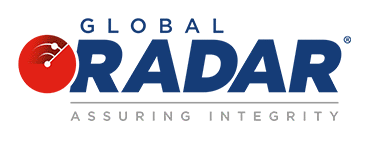Late last month, Global RADAR reported in detail on the fast-approaching beneficial ownership requirements for covered financial institutions (FI’s), regulations from the Financial Crimes Enforcement Network (FinCEN) that come into effect on May 11th, 2018. The new measures take aim at improving faulty areas that have lead to large-scale issues across the financial sector, and have contributed in some form to widespread financial misconduct proliferating both domestically and abroad in 2018. As was discussed in our March 25th article, FinCEN is calling on banks and other financial entities to further enhance their customer due diligence (CDD) procedures specifically for the opening of new client accounts. The focus has turned to beneficial ownership structure, with the “New Regulations” requiring that covered financial institutions (CFI’s) identify the beneficial owners of legal entity customers (i.e. corporations, limited liability companies, other entities created by filing a public document with the secretary of state or similar offices), and further verify the identities of each and every beneficial owner that is identified in their investigation(s). The bureau has not wavered from their definition of “beneficial owner” from the initial announcement of the “Final Rule” nearly two years ago, as financial entities will be looking for “each individual (if any) who directly or indirectly owns 25% or more of the equity interests of a legal entity customer” and/or those with “significant responsibility to control, manage, or direct a legal entity customer” (Omer, 2018). The latter can include for example an individual operating in an executive position such as Chief Executive Officer, General Partner, President, etc. This information can be obtained directly from individuals looking to open a new account with a respective FI, or as an alternative, this information can also be collected from other CFI’s who have already done their due diligence in this regard, so long as the institution granting the information is subject to the new regulations as well.
While financial institutions across the United States have had ample time to wean in any and all alterations needed to ensure their compliance with the new regulations, as the clock ticks closer to the deadline, there is still much work to be done, and many questions still remain amongst the heads of these respective entities. To better assist covered financial institutions in understanding the true scope of the requirements, FinCEN recently published highly-anticipated guidance in the form of a “frequently asked questions” document to help put an end to the speculation surrounding the more complex aspects of their regulations. Beginning today, Global RADAR will analyze and break down the key questions and responses given by FinCEN in their guidance each week leading up to the due date for compliance with the new regulations. One of the most common questions posed to FinCEN involves the beneficial ownership threshold itself, with many compliance officers wondering if they are allowed to implement more stringent policies and procedures for the collection of this information, or if they must exactly comply with the obligations prescribed by the regulations for legal entity customers (31 CFR 1010.230). The answer to this is a firm yes, as the promotion of greater transparency and increased scrutiny via the collection of more of this valuable information, and/or additional information on individuals falling below the 25% ownership mark, will only aid in supporting financial security, thus it should not be solely limited to the FinCEN threshold. The Department of the Treasury continues, writing that so long as they meet the stated requirements, a covered financial institution can choose to collect “information on natural persons who own a lower percentage of the equity interests of a legal entity customer as well as information on more than one individual with managerial control” at their own discretion (FinCEN, 2018).
The next topic discussed in the document builds off of the previous question, as it involves the relationship of the beneficial ownership threshold with additional anti-money laundering (AML) obligations that a bank may be subjected to. In this case, the question asked is whether there are instances where the collection of beneficial ownership information at a lower equity interest threshold should be performed under other AML program rules. FinCEN responds, stating that while there may be circumstances where collecting and verifying information at a lower threshold may be warranted, this activity should be based on its ability to help mitigate an institution’s respective risk. The guidance states that increased transparency is only a portion of a wholesale approach to managing due diligence obligations, thus “additional heightened risk could be mitigated by other reasonable means, such as enhanced monitoring or collecting other information, including expected account activity, in connection with the particular legal entity customer” (FinCEN, 2018). As the initial question covered, the collection and subsequent verification of supplementary information is by no means a negative. However, collection of such data may be less vital to an institution than if the time and resources used for this cause were diverted to an area in greater need of focus or revision.
The final question covered in this segment is perhaps the most troublesome for compliance officers in understanding the overall reach of the new regulations as they pertain to direct and indirect owners and complex ownership structures. The question asks when a legal entity is identified as owning 25%+ of the legal entity customer opening an account, does a covered financial institution need to request beneficial ownership information on the entity identified as an owner? The wording of the question in itself is tricky, and demonstrates just how complex the process of implementing the necessary changes can be for outside entities. Under the beneficial ownership identification requirement of the Rule, covered financial institutions must obtain the identities of individuals who meet the aforementioned definition of “beneficial owner” either directly or indirectly through corporate structures. To help illustrate this point, FinCEN provides the simplified example above.
In this scenario, “Allan is a beneficial owner of ‘Customer’ because he owns indirectly 30% of its equity interests through his direct ownership of Company A. Betty is also a beneficial owner of ‘Customer’ because she owns indirectly 20 percent of its equity interests through her direct ownership of Company A plus 16 2/3 percent through Company B for a total of indirect ownership interest of 362/3 percent” (FinCEN, 2018). The image above also shows that neither Carl nor Diane are beneficial owners because they only indirectly own 162/3 percent of ‘Customer’s’ equity interests through their direct ownership of Company B. They conclude, stating that the financial institution does not need to investigate the legal entity customer’s ownership structure independently, and can rely on information given to them by the customer’s representative.
Follow up with Global RADAR’s weekly trending articles in the coming weeks for further analysis and clarification of more of FinCEN’s Beneficial Ownership Guidance!
Global RADAR has introduced Ownership Mapper to help you manage Beneficial Ownership process. Simply register and try Global RADAR‘s Ownership Mapper for free.
CLICK HERE: Register today

